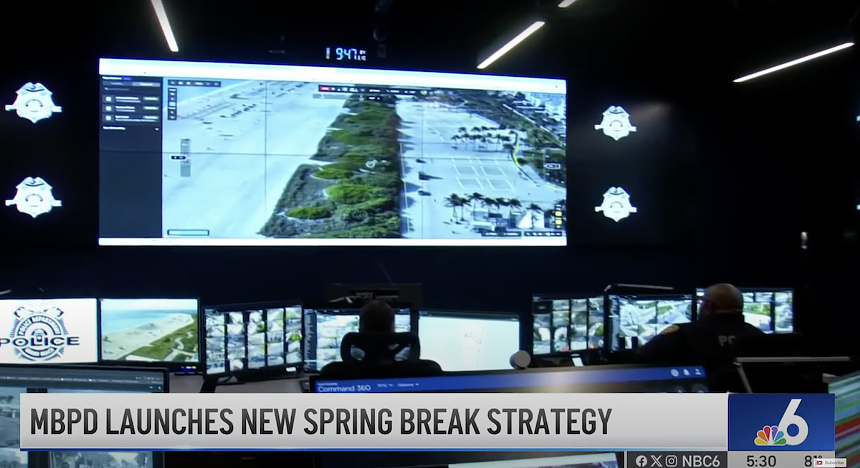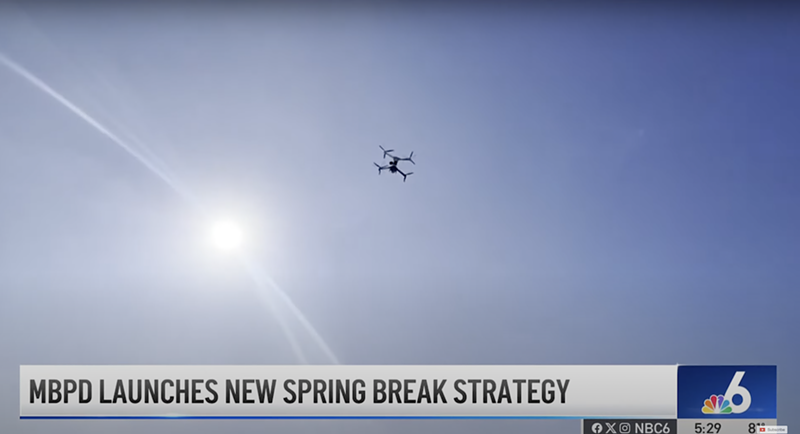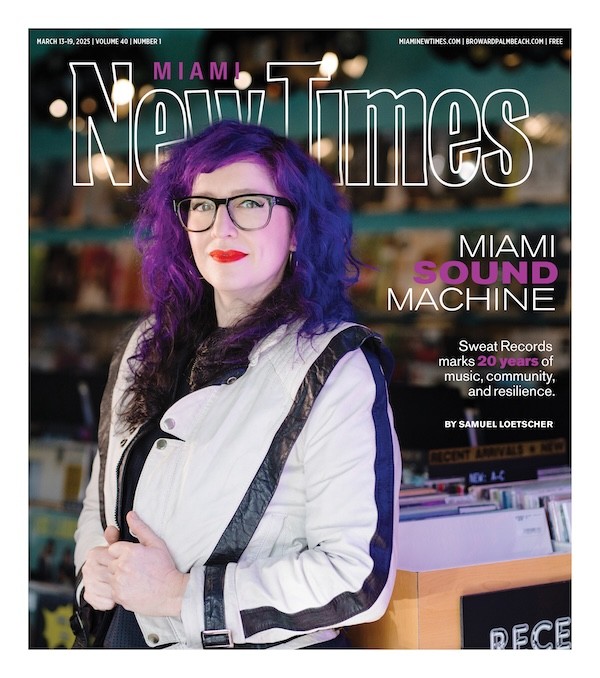Weeks after the city launched its latest ad campaign to discourage Spring Breakers from visiting this month, the department revealed that it will use aerial surveillance to keep an eye on those who do make the trip.
Officers plan to deploy a device known as the Skydio X10 drone along the beach to provide real-time information to officers. The small drone — which can fly at speeds of 45 miles per hour and features infrared sensors for tracking people in the dark — gives officers an aerial view of any area of the city within a minute of launching, MBPD said.
"People are looking at us as to how to accomplish safety, reduce crime, crack down on spring break, and the timing is perfect as we approach spring break to roll out these initiatives," Miami Beach mayor Steven Meiner said during a recent press conference. "My goal is to make Miami Beach the safest city in America, and we're on our way."
As of last year, an estimated 1,400 police departments across the country were reportedly using drones in some fashion, but only 24 have obtained waivers from the Federal Aviation Administration (FAA) to fly their drones beyond the visual line of sight, or BVLOS, of operators.
MBPD says it’s the first agency in Miami-Dade County to receive a BLVOS waiver.
According to a press release from Skydio, MBPD recently deployed five Skydio X10 drones for traffic monitoring, accident reconstruction, and "overwatch for large-scale public events," including during Art Week 2023 and on New Year's Eve.
It also planned to use its fleet of drones during Spring Break 2024, the February 2024 release says.
But while many police departments have been eager to deploy the new technology, privacy and civil rights advocates worry about the proliferation of police drones and how they're used by cops. Few departments have shared specific information with the public about how, when, or why drones are being used, according to an American Civil Liberties Union (ACLU) report.

The drone gives officers an aerial view of any area of the city within a minute of launching.
Screenshot via NBC 6 South Florida/YouTube
William Owen, a spokesperson for the New York-based nonprofit Surveillance Technology Oversight Project (STOP),
criticizes Miami Beach’s plan to use drones as first responders.
In addition to being inefficient, as he says a "flying robot coming to the rescue" won't provide real help in an emergency, he warns that the plan also raises serious privacy concerns. That's because while the plan is marketed as a way to target spring breakers, in reality it will target everybody who enjoys Miami Beach, he says.
"Drones capturing real time footage and potentially recording people's conversations are a major overstep and threat to privacy to people coming to enjoy Miami Beach on their Spring Break, as well as residents of the city," Owen tells New Times.
In a 2024 report on surveillance, ACLU senior policy analyst Jay Stanley said that one of the most concerning uses of drones by law enforcement is the monitoring of public gatherings.
"That can include events such as parades, concerts, and festivals, as well as political protest marches and rallies. Drones are a novel and powerful surveillance technology, and they are far cheaper to deploy than piloted aircraft," Stanley wrote. "We shouldn’t allow drones to become omnipresent in American life — but signs suggest that police departments are gravitating toward their routine use over gatherings."
Miami Beach has a long history of spring break crackdowns, which have faced criticism for disproportionately targeting Black travelers.
In recent years, MBPD has been accused of using increasingly harsh tactics against the predominantly young Black visitors who visit and party on Miami Beach during Spring Break and Memorial Day weekend. Some have said the policing strategies and emergency measures are reminiscent of the city's long history of anti-Black racism.









